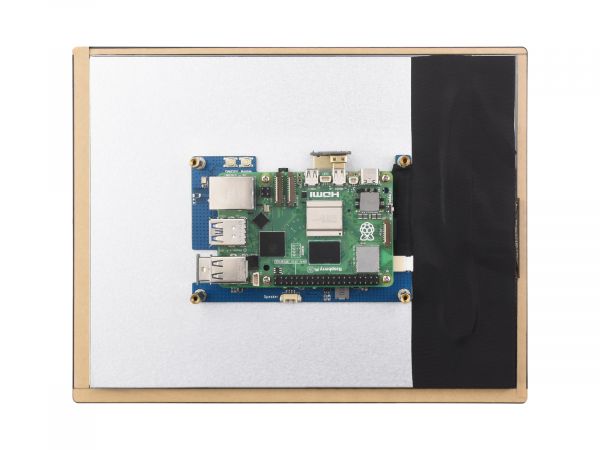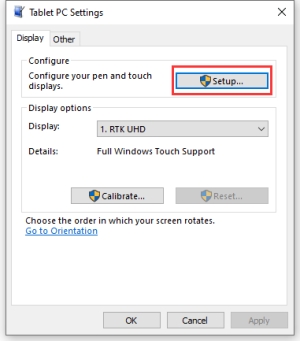Waveshare 9.7 inch IPS Capacitive Touch Display
Product Link
 Waveshare 9.7 inch IPS Capacitive Touch Display 768×1024 HDMI 10-Point TouchOpenELAB Technology Ltd.
Waveshare 9.7 inch IPS Capacitive Touch Display 768×1024 HDMI 10-Point TouchOpenELAB Technology Ltd.Introduction
The 9.7-inch 768x1024 LCD is a high-resolution universal capacitive touch screen compatible with most standard HDMI devices. Featuring a small, thin body, toughened glass panel, excellent display performance, and smooth multi-point touch control effect. The baseboard comes with fixing nuts for integrated projects.
Feature
9.7-inch IPS screen with 768x1024 hardware resolution.
10-point capacitive touch, up to 6H hardness toughened glass panel.
Supports Raspberry Pi OS / Ubuntu / Kali and Retropie when used with Raspberry Pi.
Supports Windows 11 / 10 / 8.1 / 8 / 7 when used as a computer monitor.
Supports HDMI audio output, onboard 3.5mm headphone jack and 4PIN header.
Specification
Model
9.7inch 768x1024 LCD
/
Dimensions
9.7
Inch
Viewing angle
178
Deg
Resolution
768x1024
Pixels
Touch screen dimensions
177.18(H)×226.15(V)
mm
Display area
147.64(H)×196.61(V)
mm
Pixel pitch
0.192(H)×0.192(V)
mm
Color gamut
70%
NTSC
Brightness (Max)
400
cd/m²
Contrast
900:1
/
Backlight
OSD menu dimming
/
Refresh rate
60
Hz
Display interface
Standard HDMI port
/
Power port
5V Type-C interface
/
Power consumption
4
Watt
Electrical Parameters
Input Voltage
4.75
5.00
5.25
V
Note 1
Input Current
750
800
TBD
mA
Note 2
Operating Temperature
0
25
50
℃
Note 4
Storage Temperature
-20
25
60
℃
Note 4
•Note 1: Input voltage exceeding the maximum value or improper operation may cause permanent damage to the device. •Note 2: The input current should be ≥800mA, otherwise, it will lead to start-up failure or abnormal display, and a long time in an abnormal state may cause permanent damage to the device. •Note 3: Please do not put the display in a high-temperature and high-humidity storage environment for a long time, the display needs to work within the limit value, otherwise it will be possible to damage the display.
Onboard Interface

User Manual
Working with Raspberry Pi
Hardware Connection
1. Connect the Touch port to the USB port of the Raspberry Pi. 2. Connect the HDMI port to the HDMI port of the Raspberry Pi.

Software Setting
1. Please download the newest image from the Official Raspberry Pi website. 2. Download the compressed file on the PC and unzip it to get the .img file. 3. Connect the TF card to the PC and use SDFormatter to format the TF card. 4. Open Win32DiskImager, choose the image prepared in the first step, and click "Write" to write the system image. 5. After programming, open the config.txt file in the root directory of the TF card and enter the following codes at the end of config.txt. Then, save and safely eject the TF card.
6. Insert the TF card into the Raspberry Pi, power on the Raspberry Pi, wait for a few seconds normally, and then it will display normally.
Working with PC
Support Windows 11/10/8.1/8/7
Connect the Touch interface of the LCD to the USB interface of the PC, and Windows will automatically recognize the touch function.
Connect the HDMI interface of the LCD to the HDMI interface of the PC, and Windows will automatically recognize the display function.
Note:
Some PCs do not support HDMI devices plug-and-play, usually after rebooting the system can be used normally.
If the power supply of the USB interface is insufficient, the LCD will flicker, after connecting the external 5V 1A power adapter to the LCD's Power interface, it can be restored to normal use.
Windows Touch Calibration
Take Windows 10 as an example:
1. Enter the Windows Settings of the system, type in the search bar, and click "Calibrate the screen for pen or touch input" (as shown in the picture below):

2. Click "Setup" in the pop-up "Tablet PC Settings" interface:

3. The following text prompt will appear on the screen. Please tap the touch screen with your finger, and the computer will recognize it as a touch screen.
【Note】If the touch screen is blank, press the "Enter" key, and the text prompt will switch to the touch screen. (The screen which displays the text prompt will be used as a touch screen!)

Last updated
Was this helpful?